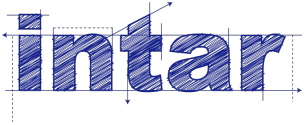Glossary
Term | Definition |
|---|---|
Benchmark |
A standard or point of reference. |
Code of practice |
Technical document providing guidance on how to comply with the law in a particular activity. |
Consumable |
A product or material that is used up during the process of making a product or carrying out an activity. |
Contaminant |
Any substance that may cause environmental damage or harm someone's health. |
Dangerous goods |
Substances classified by WorkCover as being 'dangerous' because of their potential to cause fires or explosions. |
Due diligence |
Carrying out the company's activities according to an acceptable standard of care. |
Duty of care |
Legal principle that requires a person or organisation to take care so that they do not cause harm to people or the environment. |
Ecosystem |
A community of plants, animals and other organisms living together in the natural environment. |
Greenhouse gas |
Any gas that tends to trap heat in the atmosphere and contribute to the 'greenhouse effect'. |
Hazardous substance |
Substance listed by WorkCover as being a potential risk to safety or health. |
Infrastructure |
The buildings, machines and facilities that allow a business to operate. |
Material safety data sheet (MSDS) |
Summary of the properties of a hazardous chemical or product, and information on storage, handling and emergency controls. |
Natural resources |
Materials occurring in nature that can be used to make things or provide power. |
'Non-process' energy |
Energy used to support the process of manufacturing a product or carrying out an activity, but not directly related to the immediate process itself. |
Pesticide |
Poisonous substance used to destroy insects. |
Pollution |
Contaminants that can damage air quality, water quality or other natural system in the environment. |
'Process' energy |
Energy used directly in the process of manufacturing a product or carrying out an activity. |
Ready-reckoner |
A list that can be referred to quickly for information. |
Indentation |
recess in the surface of the floor produced by a heavy static load or dropped object |
Regulation |
Legislation passed by parliament to provide details on how to implement the requirements of an Act of Parliament. |
Resource |
Any material or energy source that goes into producing an item or achieving some other outcome. |
Solvent |
Chemical product that can dissolve other liquids, solids or gases - used in products such as paint thinners, cleaning agents and glues. |
Sustainability |
Working in a way that maintains a balance between using resources for current needs and conserving resources for future needs. |
Turbid |
Muddiness of water. |
Volatile organic compounds (VOCs) |
Chemical compounds that can evaporate into the air and cause serious environmental problems and chronic health conditions. |



